Posted March 1, 2020
May 21, 2019
After almost two weeks of intense riding around England and Wales (Darren and Ruth doing all the driving, bless their souls), we took a slightly slower day and focused on Bristol itself. We did have a lovely visit to the Bristol Museum [map], which is probably one of the better local museums, but decided to leave the picture taking behind. But the centerpiece was the church of St. Mary Redcliffe [map].
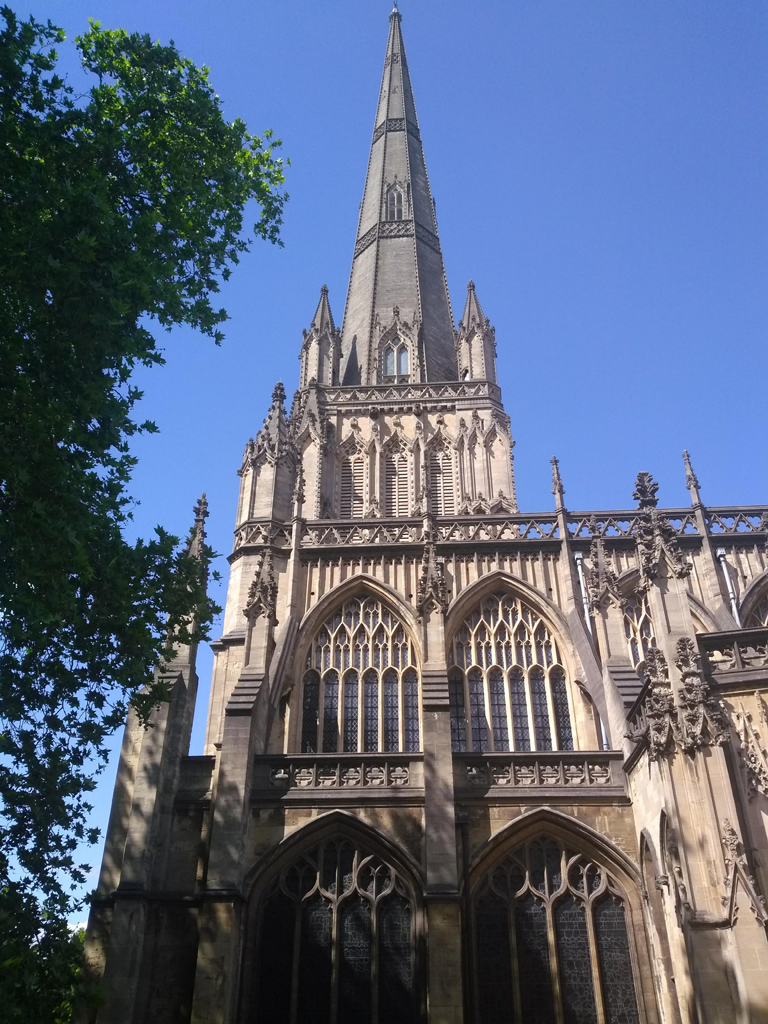
This church building has been called the epitome of high English Gothic architecture, and it isn’t hard to see why. The ornate stonework and tracery, as well as the flying buttresses and the tall spire, mark this – one of the largest parish churches in England – a real stand-out. Queen Elizabeth I is said to have described it as “the fairest, goodliest, and most famous parish church in England.”
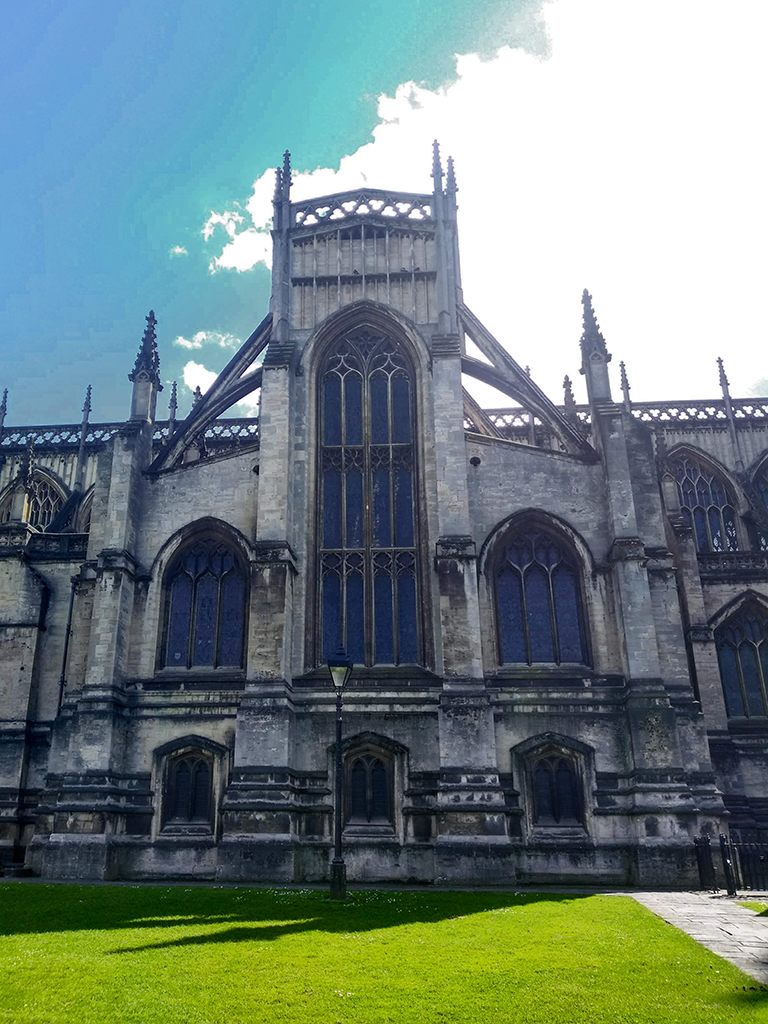
Inside, the church as a couple items of historical note. There’s a model of John Cabot’s ship, The Matthew, to commemorate his 1497 voyage to North America, as well as a piece of whalebone he brought back to England. We had visited the observation tower named for Cabot on our first day in Bristol. Cabot’s expeditions sailed from Bristol under the commission of King Henry VII.
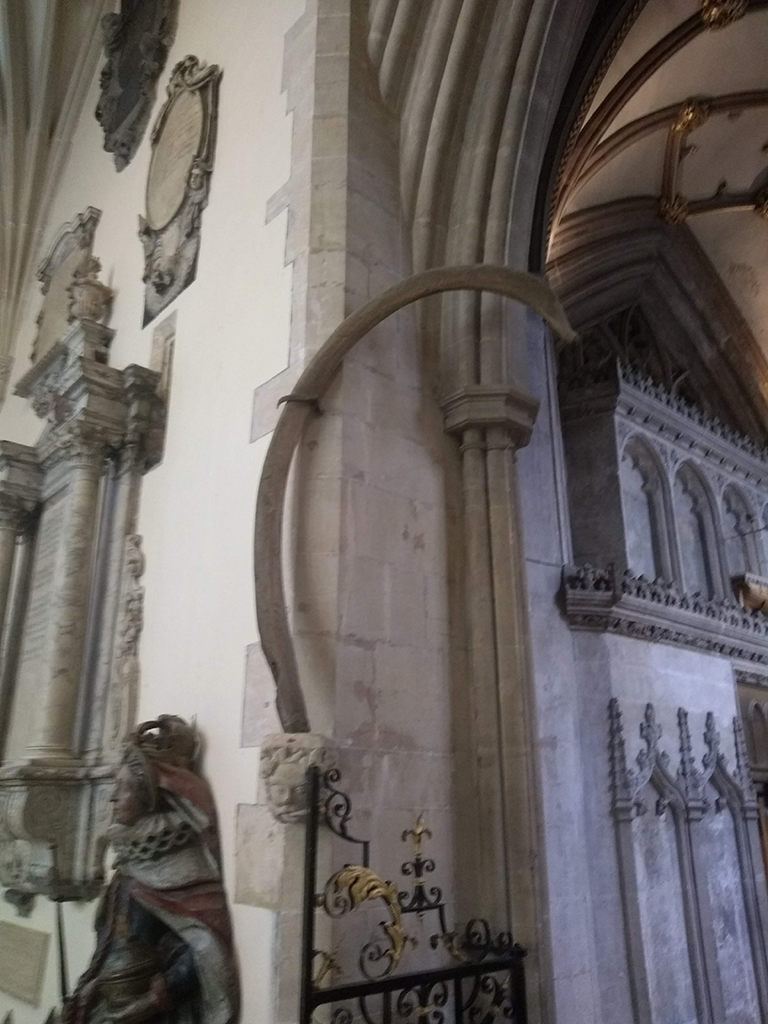
There is also a wooden carving of Queen Elizabeth I, dating from her reign (likely circa 1570). She is known to have visited the church in 1574, but I don’t know if the carving was already there, or done later to commemorate her visit. It is remarkably well preserved, though I suspect the paint’s been touched up now and then.
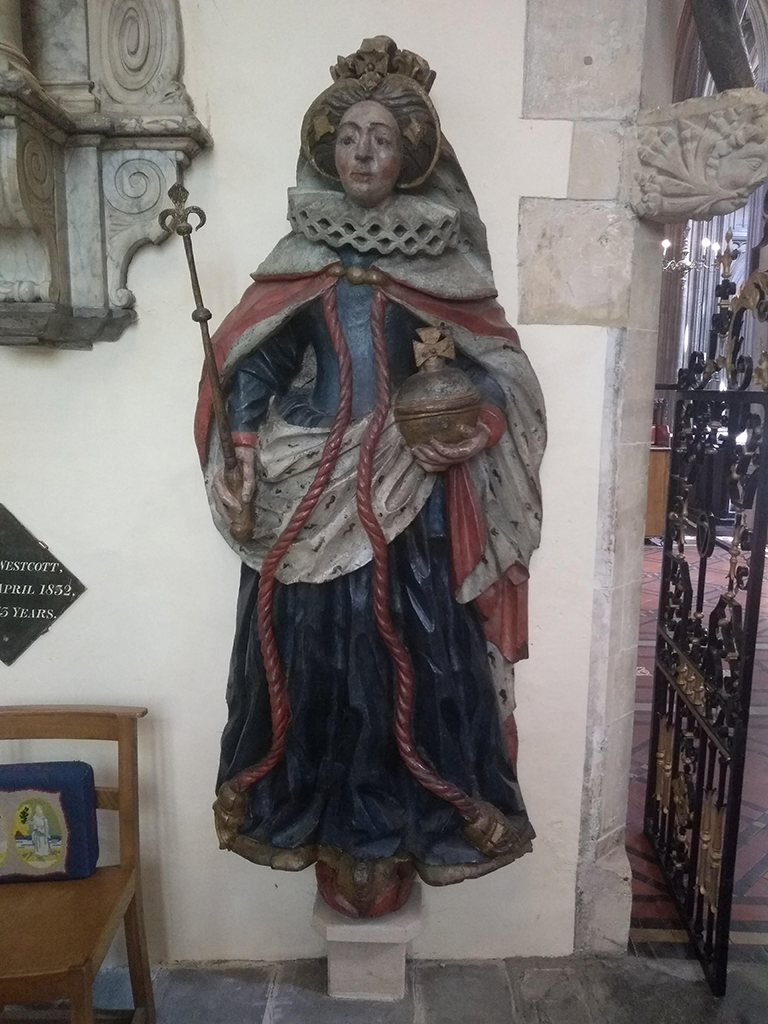
The rest of the interior is quintessentially Gothic, with high, almost delicate looking arches and vaulting and exquisite stained glass. Much of the original stained glass was destroyed during the Reformation, but later replaced. Bombing in the second world war destroyed the glass on the west side, and was replaced again.
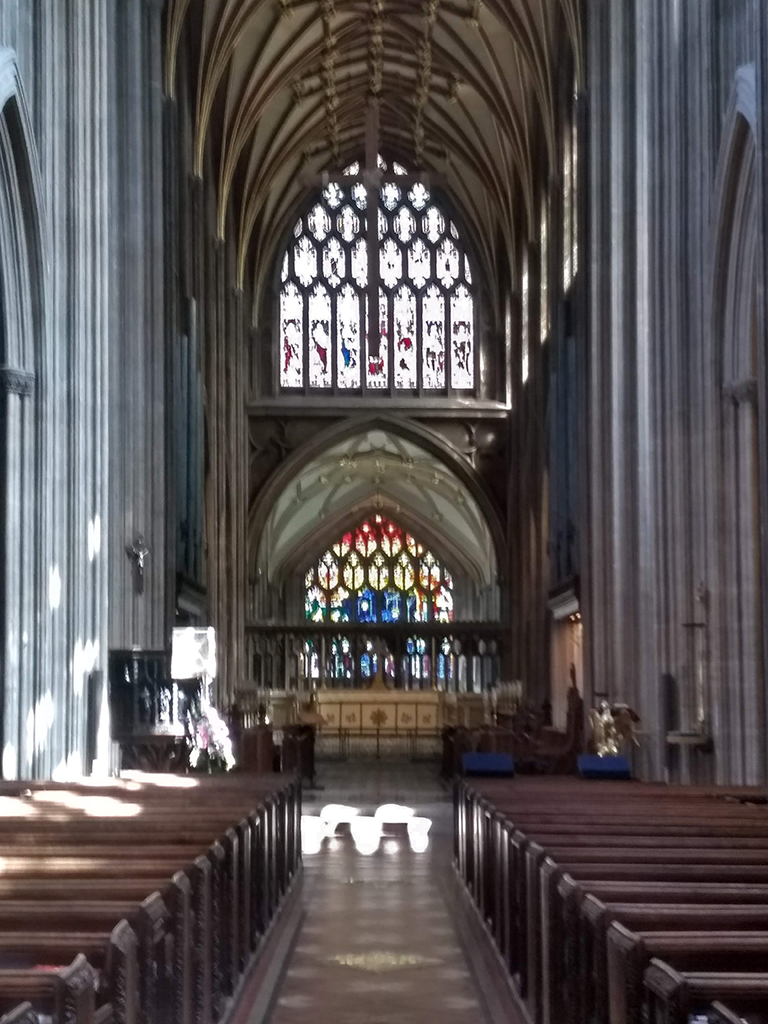
That bombing could have destroyed the church, and a poignant reminder of that is a section of tramline (from a light rail system) that was blown up and onto the church grounds, where it remains today as a memorial and reminder.

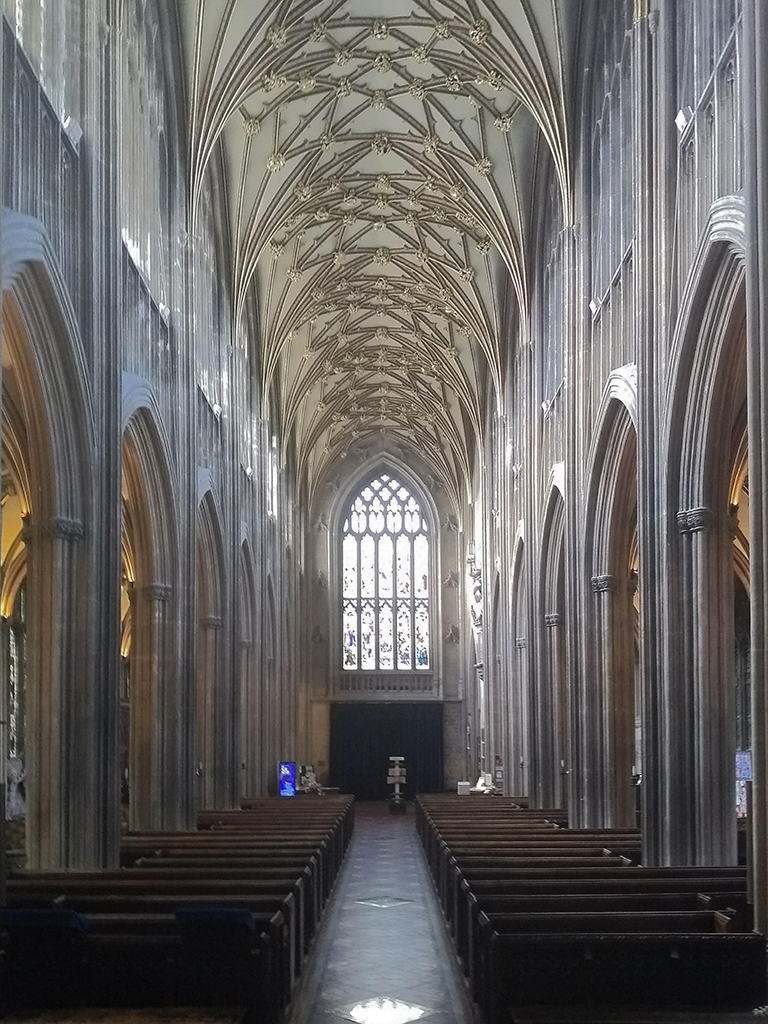
As a final note to this spectacular church, the tall spire you can see today was finished in 1872. The original was destroyed in a storm – perhaps struck by lightning – in the 15th Century. For much of it’s existence, the church had short, truncated cone cap on its tower.
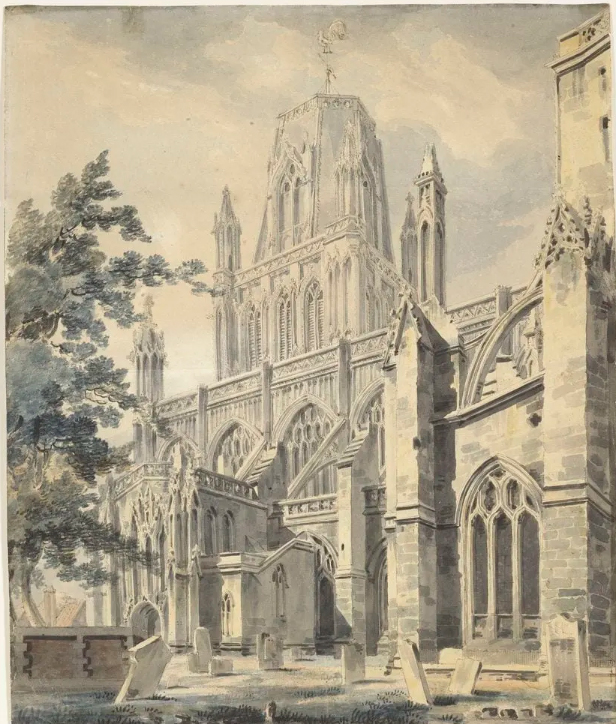
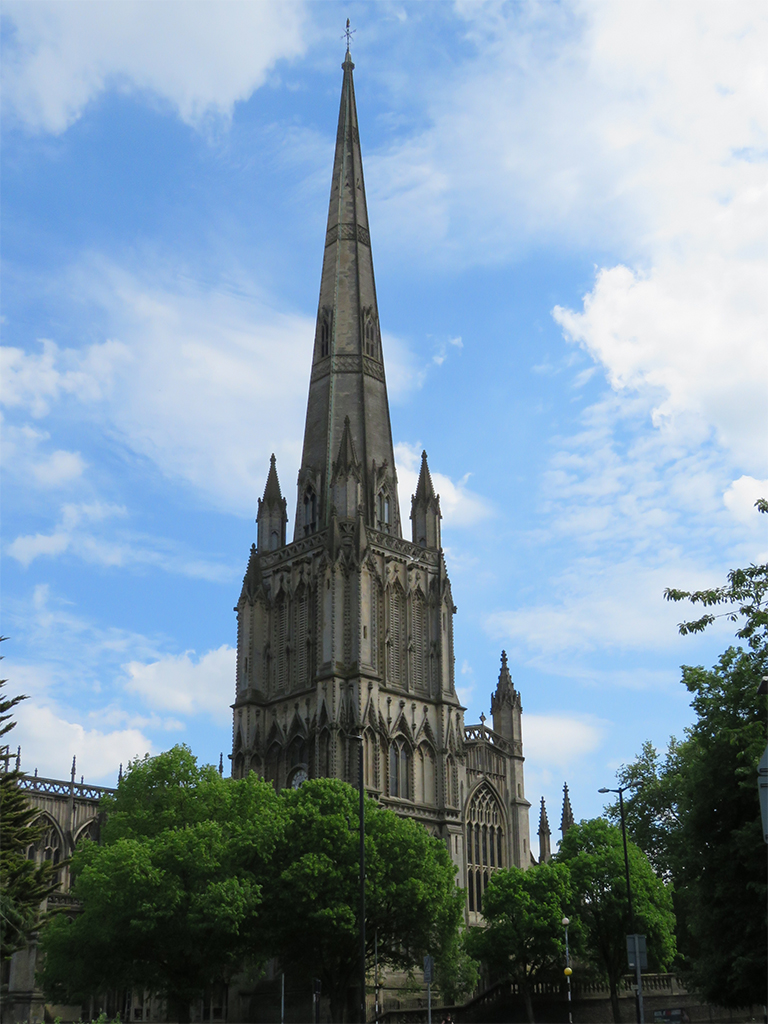
We also visited the M Shed museum, though we took no photographs as some areas expressly forbade it, and we were so engrossed that we didn’t think of it! There were some interesting Banksy pieces and some great tributes to Bristolians and their city. If you visit Bristol, M Shed is a must-see!
